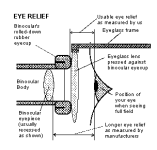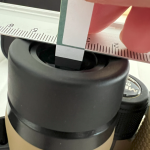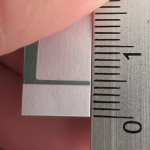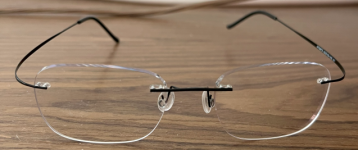Anderlfs
Active member

hi all, I have learned a lot since arriving on this forum a few days ago. I'm currently trying to measure the "usable eye relief" of my Meade CanyonView 8x42 because despite having only 14mm of specified eye relief, I can see the entire FOV on It wearing eyeglasses. My purpose is to be able to better compare with binoculars that I cannot test. I would like some feedback on whether what I did is valid. I read in some topics that there is even Dutch equipment designed to measure this, but as I don't have access, I'm trying to do It in a rustic way, just to get an idea of the measurement. Therefore, I started with the theory illustrated below.

I basically took a piece of paper with a marking on It and something stiff and thin like a metal ruler. Then I measured the difference and discounted the eye relief specified by the manufacturer.


If the method is OK, the usable eye relief of this binoculars should be around a mere 10mm. I believe I can use it due to the fact that I wear rimless glasses, bringing the lenses closer to the eyes.

I appreciate any feedback.
Thanks in advance.

I basically took a piece of paper with a marking on It and something stiff and thin like a metal ruler. Then I measured the difference and discounted the eye relief specified by the manufacturer.


If the method is OK, the usable eye relief of this binoculars should be around a mere 10mm. I believe I can use it due to the fact that I wear rimless glasses, bringing the lenses closer to the eyes.

I appreciate any feedback.
Thanks in advance.





